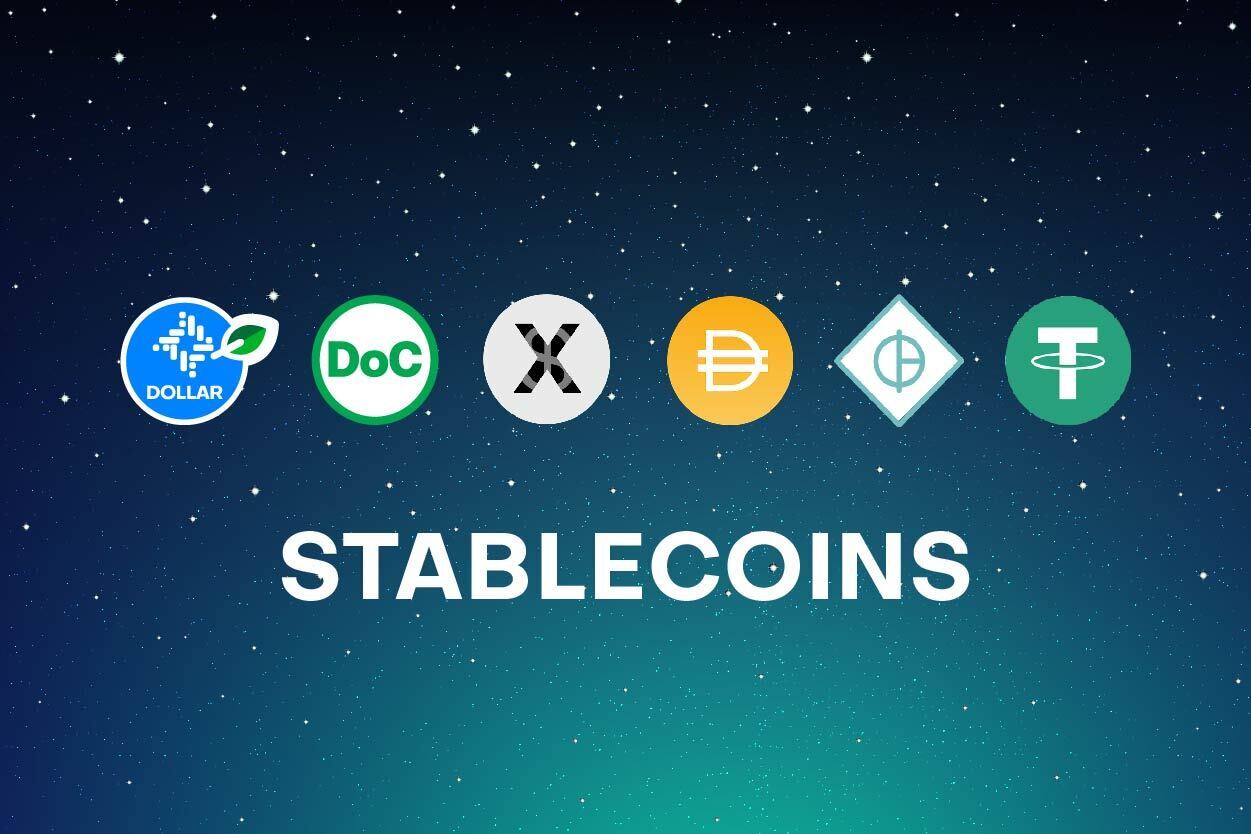In the vast and dynamic world of cryptocurrencies, two prominent categories often stand out: stablecoins and altcoins. While both contribute to the diverse landscape of digital assets, they serve distinct purposes and come with their unique sets of characteristics. In this exploration, we’ll dissect the essence of stablecoins and altcoins, shedding light on their functionalities, advantages, and potential challenges.
Stablecoins: Anchors in the Crypto Storm

Stablecoins, a cornerstone of the crypto world, prioritize stability over volatility. Tethered to traditional currencies or commodities like gold, stablecoins provide a reliable store of value and medium of exchange. Their primary aim is to offer a digital alternative to fiat currencies without the price fluctuations common in other cryptocurrencies. Widely used for everyday transactions, stablecoins facilitate seamless transfers and serve as a stable anchor in the turbulent seas of crypto markets.
Whether centralized or decentralized, these coins maintain a consistent value, making them a popular choice for risk-averse users, traders seeking stability, and those navigating the dynamic landscape of digital assets. In essence, stablecoins bridge the gap between the crypto realm and traditional financial stability.
Pros
- Price Stability: Stablecoins offer a stable value, making them suitable for everyday transactions and as a store of value.
- Risk Mitigation: Lower volatility reduces the risk associated with price fluctuations, making them a more conservative choice.
- Use in Trading: Traders often use stablecoins as a hedge against the volatility of other cryptocurrencies.
Cons
- Limited Returns: Stablecoins are not designed for substantial price appreciation, so they may not provide high returns for investors.
- Dependence on Centralization: Some stablecoins rely on centralized entities, potentially introducing counterparty risk.
Altcoins: The Diverse Universe of Alternative Cryptocurrencies
Altcoins, or alternative cryptocurrencies, form a diverse universe beyond Bitcoin. These digital assets innovate and specialize, addressing specific gaps in existing cryptocurrencies. With distinct features and technologies, altcoins foster competition and drive innovation in the crypto space. Ethereum, for instance, introduced smart contracts, revolutionizing decentralized applications. Ripple focuses on seamless cross-border payments, showcasing the breadth of altcoin applications. Altcoins offer investment opportunities, presenting a spectrum of choices for those seeking to diversify their portfolios.
However, their higher volatility compared to stablecoins comes with increased risk, making thorough research essential for informed investment decisions. In essence, altcoins contribute to the dynamic evolution of cryptocurrency, shaping the future of digital finance.
Pros
- Innovation: Altcoins often introduce innovative features and technologies, contributing to the overall development of the cryptocurrency space.
- Diverse Use Cases: Altcoins power a wide range of applications, including (DeFi) & (NFTs)
- Investment Opportunities: It can offer higher returns due to their potential for significant price appreciation.
Cons
- Higher Volatility: Altcoins are generally more volatile than stablecoins, posing a higher risk for investors.
- Complexity: The diverse array of altcoins and their underlying technologies can be complex, requiring thorough research for informed investment decisions.
Comparative Analysis between Stablecoins and Altcoins
Stablecoins prioritize stability, ensuring reliability, while altcoins focus on innovation and higher potential returns. Both are vital in the crypto ecosystem, catering to diverse user preferences and objectives.
| Aspect | Stablecoins | Altcoins |
|---|---|---|
| Purpose | Maintain stable value, reduce volatility | Diverse purposes, innovation, and specialization |
| Price Stability | Designed for stability, often pegged to fiat | Subject to market fluctuations, higher volatility |
| Use Cases | Reliable medium of exchange, store of value | Broad spectrum including DeFi, NFTs, and more |
| Backing Model | Centralized (reserves) or Decentralized (algorithm) | Varied, with different consensus and governance models |
| Risk vs. Reward | Lower risk, lower potential reward | Higher risk, higher potential reward |
| Innovation | Focus on stability, limited innovation | Emphasis on innovation, introducing new features |
| Investment Strategy | Conservative, hedging against volatility | Diverse options for portfolio expansion |
| Technology Diversity | Relies on stability mechanisms or algorithms | Wide range of technologies, consensus algorithms |
| Market Maturity | Often used for day-to-day transactions | Supports various decentralized applications |
Conclusion:
In the ever-evolving realm of cryptocurrencies, stablecoins and altcoins play pivotal roles, each contributing to the overall ecosystem in its unique way. Stablecoins provide a stable foundation for day-to-day transactions and risk management, while altcoins foster innovation and present diverse investment opportunities. Navigating the crypto seas involves understanding the distinct features and purposes of these two categories, enabling users and investors to make informed decisions in this dynamic and exciting space.
As the crypto landscape continues to evolve, the interplay between Stablecoins and Altcoins will shape the future of digital finance, offering users a spectrum of options to suit their preferences and objectives.